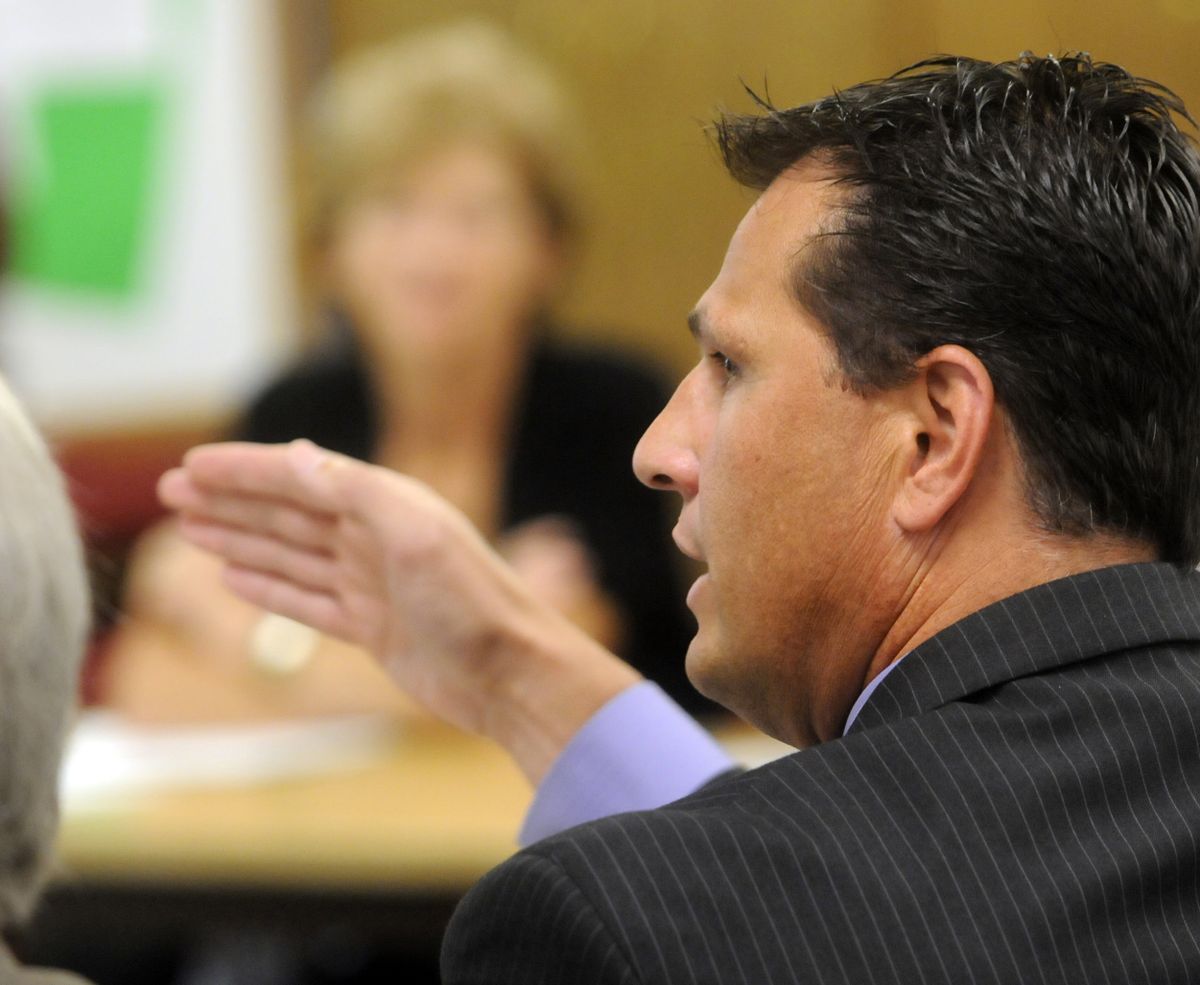District school chiefs tell how they dealt with budget shortfalls

Superintendents of the Central Valley, East Valley, Freeman and West Valley school districts met Thursday morning with the business education committee from the Spokane Valley Chamber of Commerce to discuss changes they have made to survive state budget cuts during the last few years.
Superintendent Ben Small from Central Valley told the group the district had been planning for a “looming financial crisis,” since the 2008-’09 school year. The district came up with a three-year budget plan with projected losses in funding to help ease into financially lean years. Small did state, however, that projections were only estimations.
“As soon as it hits real, it falls apart,” he said.
He discussed keeping a budget reserve in 2008-’09 of $1.7 million that has been softening the blow since then. Those funds will continue to cushion the district into next year. Small also said the district will readjust its budget again for midyear cuts.
Small discussed efficiencies the district has been making to help save money in the long run. Central Valley recently converted its servers to TierPoint, a Liberty Lake-based company which Small estimates will save the district $283,266 over the next five years. The district now uses a remote operations center to monitor and troubleshoot any HVAC system troubles to save maintenance workers from making about 60 percent of its calls. Central Valley received a grant from the Office of Superintendent of Public Instruction to upgrade its energy systems and upgraded its information system to save staff members’ time while scheduling classes and tracking students’ progress.
Superintendent John Glenewinkel discussed East Valley School District’s decision to close both Mountain View Middle School and Skyview Elementary School last spring.
“We’ve had 10 years of declining enrollment in our buildings,” Glenewinkel said.
He also discussed the population shifts in his district. East Valley is busing many students east to help fill buildings and ease overcrowding on the west side of the district.
“Trent will always be full,” he said. The school serves students from neighboring apartments, 85 percent of whom receive free or reduced lunches. It also has a high student turnover rate – about 50 to 60 percent of its students move in and out of the district each year.
But the east side of the district hasn’t fared so well. Mountain View Middle School served about 330 students last year and it was projected to serve about that this year before the district made the decision to close it. There aren’t as many students living in the area.
“Our buildings are in the wrong places,” he said.
Randy Russell, the new superintendent of the Freeman School District, told the committee he comes from Idaho and views the Washington state budget crisis as a bit of a relief.
“In Idaho there is no money,” he said.
As the principal of Coeur d’Alene High School last year, he said of the nine science teachers he had last year, seven have left for jobs that pay better. One of them is now in the Central Valley School District.
Russell also said if the state legislature decides to make cuts to levy equalization funds – money distributed to districts with low tax bases – it would be devastating to smaller districts, a statement with which the other three superintendents agreed.
Superintendent Polly Crowley of West Valley said her district asked its stakeholders what cuts they would be willing to make. Parents and other residents met for budget forums in June and were given a list of possible cuts. She mentioned a possible $80,000 cut to its usual budget of $150,000 for curriculum adoption. The public said it wasn’t willing to make that big of a cut, but proposed a $50,000 cut instead. She said the district will need to be more creative when discussing possibly outdated material in the coming years, using online resources to make up the difference.
“It does indicate some values and priorities for some people,” she said of the process.
She mentioned West Valley’s decision to refinance construction bonds the voters approved in 2004 to rebuild its high school, saving taxpayers $850,000.
Small talked about the importance of the election coming up in February, since all four districts will ask voters to approve levys. He said the state has approved school districts to fund 28 percent of their budgets with levy money, but Central Valley has rolled back 4 percent of that figure to its taxpayers for the last three years he has been in the district. The other districts have done this as well.
“It’s an investment in our community and schools,” Small said.